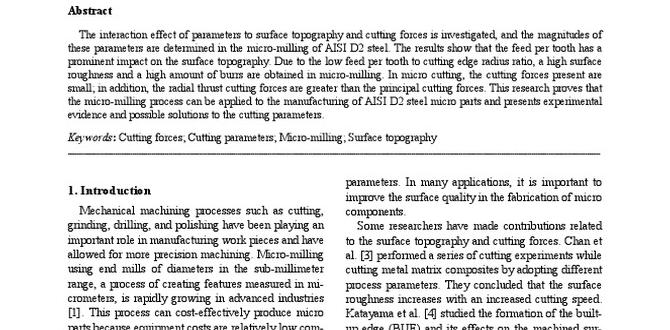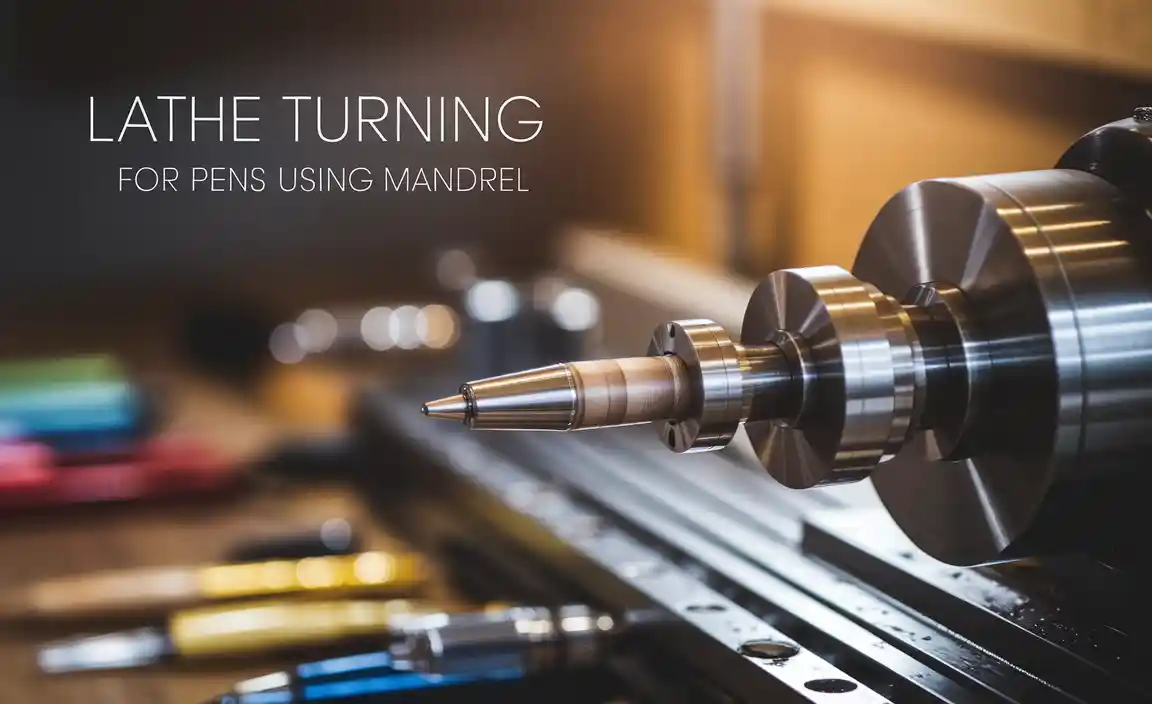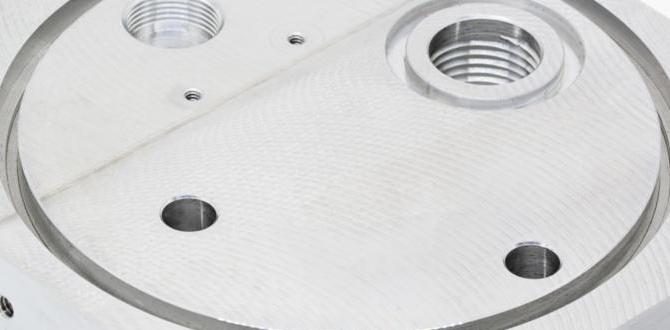Carbide end mills are perfect for dry cutting PEEK, offering precision and ease without coolant. This guide shows you how to leverage PEEK dry cutting with a carbide end mill for clean, efficient results in your workshop.
Carbide End Mill: Effortless Peek Dry Cutting for Beginners
Are you struggling with cutting PEEK (Polyetheretherketone) without making a mess or damaging your workpiece? Many beginners find PEEK challenging because it’s a tough, heat-sensitive plastic that can easily melt or chip if cut incorrectly. Traditional methods involving coolants can also be problematic in a home workshop, leading to cleanup issues and specialized equipment needs. But what if I told you there’s a smarter, cleaner way? Using a specifically chosen carbide end mill for dry cutting can make all the difference. This article will guide you through everything you need to know, making PEEK machining approachable and successful, even if you’re just starting out.
Why Dry Cutting PEEK with a Carbide End Mill is a Game Changer
PEEK is a high-performance thermoplastic known for its strength, chemical resistance, and high-temperature performance. These same qualities make it a bit tricky to machine. When you cut PEEK, it generates heat. If that heat builds up too much, the plastic can soften, melt, and gum up your cutting tool. This leads to poor surface finish, dimensional inaccuracies, and can even ruin your end mill. Coolant can help manage this heat, but it’s not always practical, especially in smaller workshops or for certain applications. Dry cutting, when done correctly, offers a simpler, cleaner alternative. It eliminates the need for coolant systems, which saves on setup time, reduces mess, and minimizes disposal issues. The key is selecting the right tool – a specialized carbide end mill – and using the right cutting parameters. Carbide is a fantastic material for this because it’s incredibly hard and can withstand the heat generated better than many other tool materials.
Understanding Carbide End Mills
An end mill is a type of milling cutter, essentially a rotating cutting tool that can create precise shapes and features in a workpiece. They have cutting edges on their side and end, allowing for plunging (moving straight down into the material) and profiling or slotting. Carbide, specifically tungsten carbide, is an extremely hard and wear-resistant material often used for cutting tools. When we talk about a “carbide end mill,” we mean an end mill made from this robust material. For cutting plastics like PEEK, certain features of a carbide end mill are particularly important:
- Material Composition: Primarily tungsten carbide, known for its hardness and ability to hold a sharp edge.
- Flute Design: The flutes (grooves) on the end mill help evacuate chips. For PEEK, higher flute counts (like 3 or 4 flutes) can sometimes handle the material better by providing more cutting edges, but specialized plastics end mills often have fewer flutes (like 2) with polished surfaces and specific helix angles to manage heat and chip evacuation.
- Coatings: While not always necessary for PEEK dry cutting, some coatings can further enhance performance and tool life by reducing friction and heat.
- Geometry: The overall shape and angles of the cutting edges are designed for specific materials. For plastics, we often look for sharp, polished edges with specific rake and clearance angles.
When selecting a carbide end mill for PEEK dry cutting, you’ll want to pay close attention to its intended application. While generic carbide end mills can work, tools specifically designed for plastics or composites will often yield superior results. For instance, a “high-performance plastic end mill” or a “single or double flute compression end mill” are excellent choices.
Choosing the Right Carbide End Mill for PEEK
The sheer variety of carbide end mills can be overwhelming, but for PEEK dry cutting, a few key characteristics will help you narrow down your choices. We’re looking for a tool that can remove material efficiently while minimizing heat buildup.
Key Features to Look For:
- Number of Flutes: For dry cutting plastics like PEEK, fewer flutes (e.g., 2 flutes) are often better. This allows more space for chips to escape, which is crucial for preventing recutting and heat buildup. More flutes (like 4) can sometimes lead to excessive heat if chip evacuation is poor.
- Helix Angle: A high helix angle (often 45 degrees or more) combined with a polished flute finish is ideal for plastics. This design helps to quickly pull chips away from the cutting zone, reducing friction and preventing melting.
- Coating: While not always essential, a coating like TiCN (Titanium Carbonitride) or a specialized plastic coating can further reduce friction and improve tool life. However, for PEEK, a well-designed uncoated end mill with polished flutes is often sufficient.
- End Type: For general-purpose cutting and pocketing, a standard flat-end carbide end mill Ryou will need. For creating a sharp corner at the bottom of a pocket, a square end mill is perfect. If you need to create fillets (rounded internal corners), you’d look for a ball-end mill.
- Shank Size: This refers to the part of the end mill that fits into your milling machine’s collet or tool holder. Common sizes include 1/4 inch and 1/2 inch. Ensure it matches your machine’s capabilities.
- Cut Length (or Effective Length): This is the length of the cutting flutes. For deeper pockets or cuts, you’ll need an end mill with a longer cut length.
Specific Recommendations: When searching for an end mill, look for terms like “plastic end mill,” “high-performance plastic end mill,” or “single/double flute compression end mill.” A common and effective choice for general PEEK dry cutting is a 2-flute, high-helix (.375″ or .500″ shank) carbide end mill with a polished flute finish.
Example Table: Carbide End Mill Features for PEEK Dry Cutting
This table highlights the preferred features of a carbide end mill when cutting PEEK dry:
| Feature | Ideal for PEEK Dry Cutting | Why it Matters |
|---|---|---|
| Number of Flutes | 2 Flutes | Better chip evacuation, reduces heat buildup. |
| Helix Angle | High (45°+) | Efficiently clears chips away from the cut. |
| Flute Finish | Polished | Reduces friction and material adhesion, preventing melting. |
| Material | Carbide | Hardness and heat resistance for efficient cutting. |
| Coating (Optional) | TiCN or specialized plastic coating | Further reduces friction and improves wear resistance, but often not crucial for PEEK if other factors are optimized. |
Understanding PEEK Properties and Machining Challenges
PEEK is truly remarkable. It’s used in demanding applications like aerospace components, medical implants, and automotive parts. Its excellent mechanical properties – high tensile strength, stiffness, and fatigue resistance – make it a desirable machined material. However, these properties also mean it’s a tough customer to cut:
- High Melting Point, Low Softening Temperature: While PEEK can withstand very high temperatures, it has a relatively low glass transition temperature (around 140°C or 284°F) and melting point. This means even moderate cutting heat can cause it to soften and deform, leading to tool loading and poor surface finish.
- Thermal Expansion: PEEK expands and contracts significantly with temperature changes. This can affect machining accuracy if not accounted for. Dry cutting, by minimizing heat spikes, helps control this.
- Chipping and Brittleness: If not properly supported or if cut too aggressively, PEEK can exhibit brittle behavior, leading to chipping, especially on thin walls or features.
- Work Hardening: Like many plastics, PEEK can work harden if machined improperly, making subsequent cuts more difficult.
The goal of dry cutting PEEK with a carbide end mill is to manage the heat generated. This means removing material quickly and efficiently so chips don’t linger and transfer heat back into the workpiece and tool. It’s a balancing act between cutting speed, feed rate, depth of cut, and the tool’s ability to clear chips.
Key Considerations for Dry Cutting PEEK
Dry cutting PEEK is about minimizing friction and maximizing chip evacuation. If you don’t get this right, you’ll find yourself dealing with melted plastic fused to your end mill and a ruined surface finish on your PEEK part. Here are the critical factors:
- Air Blast is Your Friend: Even though it’s “dry” cutting, a powerful, focused stream of compressed air directed at the cutting zone is essential. This air blast helps to cool the cutting edge and blow chips away immediately, preventing them from being recut or accumulating.
- Chip Load is King: This is the amount of material removed by each cutting edge of the end mill per revolution. Too small a chip load can lead to rubbing and excessive heat. Too large can overload the tool. For PEEK, you generally want to aim for a moderate chip load – enough to make a real cut, but not so much that you strain the tool.
- Spindle Speed (RPM): This determines how fast the end mill rotates. Higher RPMs can mean faster cutting, but they also generate more heat. You need to find a balance that allows the tool to cut efficiently without overheating.
- Feed Rate: This is how fast the end mill moves through the material. Higher feed rates, combined with appropriate RPM, can lead to a larger chip load and faster material removal, which is good for heat management.
- Depth of Cut (DOC): How deep is each pass of the end mill? Shallower depths of cut are often preferred for plastics to reduce the cutting force and heat generated, especially in harder PEEK grades.
It’s important to note that PEEK can come in different grades (e.g., standard, reinforced with glass or carbon fiber). The machining parameters might need slight adjustments depending on the specific grade.
Step-by-Step Guide: Proficient Peek Dry Cutting with a Carbide End Mill
Let’s get your PEEK projects cut cleanly and efficiently. Follow these steps to ensure success. Remember: safety first! Always wear safety glasses and ensure your workpiece is securely fixtured.
Step 1: Preparation and Setup
- Secure the PEEK Workpiece: Ensure your PEEK material is firmly clamped to the milling machine table. Use appropriate workholding devices like vices, clamps, or fixtures. Avoid overtightening, which can distort the plastic.
- Select the Correct Carbide End Mill: Choose a 2-flute, high-helix, polished carbide end mill designed for plastics. Ensure its shank size matches your machine’s collet.
- Install the End Mill: Insert the end mill into the collet and tighten it securely in your milling machine. Make sure it’s centered and runout is minimal.
- Set Up Zero/Origin Point: Using your machine’s probing system or manual methods, carefully set the X, Y, and Z zero points for your cutting operation. For the Z-axis, this is typically the top surface of the PEEK workpiece.
- Prepare Air Blast: Ensure your compressed air source is connected and ready. You’ll want to be able to direct a strong, focused stream of air directly at the point where the end mill meets the PEEK.
Step 2: Initial Cutting Parameters & Testing
This is arguably the most crucial phase. Finding the sweet spot for RPM, feed rate, and depth of cut will prevent issues.
- Consult Tool Manufacturer Recommendations: If available, check the end mill manufacturer’s recommended cutting parameters for plastics. These are often a good starting point.
- Start Conservatively: If no recommendations are available, begin with conservative settings.
- Spindle Speed (RPM): For a 1/4 inch end mill, start around 10,000-15,000 RPM. For a 1/2 inch, you might start around 6,000-10,000 RPM.
- Feed Rate: This is closely tied to chip load. A good starting point for feed rate (IPM – inches per minute) for a 1/4 inch end mill might be 15-30 IPM. For a 1/2 inch, 30-60 IPM.
- Depth of Cut (DOC): Start shallow, perhaps 0.010″ to 0.020″ for a 1/4 inch end mill, and 0.020″ to 0.040″ for a 1/2 inch.
- Apply Air Blast: Turn on the compressed air blast to cool the cutting area and clear chips as soon as the end mill begins to spin.
- Perform a Test Cut: Make a small test cut in a scrap piece of PEEK or a less critical area of your part. Listen to the sound of the cut. It should be a consistent, clean cutting sound, not a rubbing or scraping noise. Watch the chip formation – you want small, well-formed chips, not powdery dust or stringy, melted plastic.
Step 3: Fine-Tuning and Making the Cut
Based on your test cut, adjust parameters as needed.
- Adjust Feed Rate: If chips are too small or powdery, increase the feed rate slightly to achieve a more substantial chip. If you hear chip welding or see melted plastic, the feed rate might be too high for the current RPM, or the heat is too much.
- Adjust Spindle Speed: If the tool is rubbing or the cut sounds “burry,” you might need to increase RPMs to achieve a proper cutting action. If heat is a major issue and your feed rate is optimized, you might need to slightly decrease RPMs and adjust feed to maintain chip load, or reduce depth of cut.
- Adjust Depth of Cut: For difficult areas or if heat is still a problem, take shallower passes. This significantly reduces the cutting forces and heat generated per pass.
- Monitor for Melting: Constantly observe the cutting process. If you see any signs of melting, gumming, or excessive heat (fumes, discoloration), immediately stop the spindle, and reassess your parameters. It’s often better to increase feed rate or decrease depth of cut before increasing RPM.
- Chip Evacuation: Ensure the air blast is effectively clearing chips. You may need to adjust its angle or intensity. Multiple shallow passes are often better than one deep pass for PEEK when dry cutting.
- Executing the Cut: Once you’ve dialed in your parameters with a test cut, proceed with your actual machining operation. Continue monitoring the process closely.
Step 4: Finishing and Inspection
- Clean the Part: After the machining is complete, use a brush or compressed air to remove any residual chips or dust from the PEEK part.
- Inspect the Surface Finish: Examine the cut surfaces. They should be smooth, free of melting, and possess good dimensional accuracy.
- Check for Tool Wear: Inspect the end mill for any signs of excessive wear, chipping, or material buildup. If the tool appears damaged, it’s time to replace it to avoid future issues.
Troubleshooting Common PEEK Dry Cutting Issues
Even with the best intentions, you might run into a few snags. Here’s how to tackle them:
- Problem: Melted Plastic Welding to the End Mill
- Cause: Insufficient chip evacuation, too much heat buildup, or feed rate too low for the RPM.
- Solution:
- Increase air blast intensity and focus.
- Increase feed rate to create larger chips.
- Decrease depth of cut.
- Consider if the end mill flutes are clean and polished.
- Problem: Poor Surface Finish (Rough or Fuzzy)
- Cause: Tool is dull, feed rate is too low, or too much vibration.
- Solution:
- Check if the end mill is sharp and undamaged.
- Increase feed rate.
- Ensure the workpiece is rigidly fixtured.
- Reduce depth of cut.
- Problem: Chipping or Cracking
- Cause: Feed rate too high, depth of cut too aggressive, or unsupported thin sections.
- Solution:
- Decrease feed rate and/or depth of cut.
- Ensure adequate support behind thin walls.
- Use climb milling where appropriate for plastics to reduce tear-out.
- Problem: Excessive Tool Wear
- Cause: Incorrect
- Cause: Incorrect




